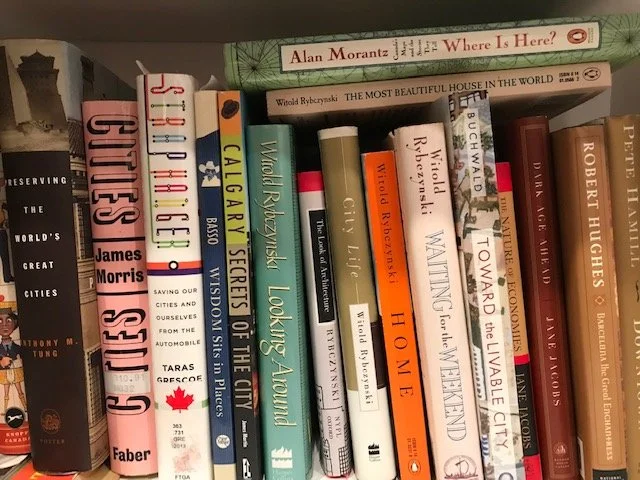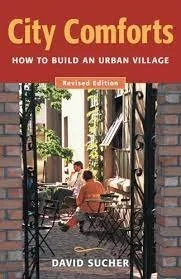What urban planners / community leaders are reading and watching?
In today’s world many of us are armchair urban planners. Yes, it seems like everyone has an opinion on how to make their city and/or community a better place to live, work and play. Community engagement is critical to urban planning today, but does the average citizen have the knowledge to understand the complexity of city building, and balancing the wants and needs for their community, with those of the city-at-large?
I thought I’d reach out to a few urban influencers in Calgary and Edmonton to find out what books they would recommend to the layperson interested in learning more about the urban planning and community development. I got some surprising suggestions.
Ali MacMillan, who has been the community champion for the Calgary’s Bridgeland/Riverside community for many years was quick to respond with, “Can I instead offer up a Ted Talk?” I thought why not, so she suggested “Beware a Group Of Dedicated Amateurs,” which she saw at “Bacon Fest” an urban planning film festival in Calgary few years ago. After hearing Jason Roberts' talk, a lightbulb went off for MacMillan that citizens at the grassroots level know best what changes are needed to make their community thrive. “I realized if we could empower community members to lead the change in their communities what an amazing City we could have! This video moved me from dreaming to doing!”
Erik Backstrom a Senior Planner at the City of Edmonton asked if he could suggest two indigenous related city building books, “Old Stories, New ways” by Edmonton architect Vivian Manasc and “Avenue of Champions” by Conor Kerr.
Backstrom’s thinking is that “after decades of cultural erasure, Indigenous peoples are reasserting their place in their city. City building in Edmonton and cities across Canada are changing as a result.” Manasc's book is a personal reflection on how working with various indigenous cultures has shaped her design practice.
Kerr's debut novel is a compelling portrait of Indigenous youth navigating colonial structures in Edmonton. Backstrom thinks, “Together these books illuminate recent actions in Edmonton to “reindigenize” the city with projects like the ᐄᓃᐤ (ÎNÎW) River Lot 11∞ Indigenous Art Park and the kihciy askiy ceremonial and land-based learning site.”
Mike Wilhem, President of the Shaganappi Community Association, and I have an ongoing discourse re: the pros and cons of various infill projects in Calgary and the value they bring to established communities.
When I asked him if there was a book, he could recommend for the public he responded with “I find it a tough go, a lot of the pure planning stuff is too dogmatic for the public.
However, I think David Sucher's "City Comforts" is a great pocket primer, with good visuals on basic urban design principles.
For community leaders who want to survive development committee politics I’d recommend Tom Bethell's "The Noblest Triumph," it gives a good understanding of property rights, and helps keeps everybody focused on successful outcomes.”
Chris Ollenberger, Managing Principal of Quantum Place Developments Ltd, who orchestrated the development of Calgary’s East Village masterplan recommends reading “The Great Neighbourhood Book: A Do-it-Yourself Guide” by Jay Walljasper at Project for Public Spaces (PPS). It is full of practical advice and real-world examples of how concerned citizens have addressed issues from crime and safety, to creating community gardens and gathering places.
FYI: The PPS site has numerous “How to… guides” that you can download for free.
Last Read
If I had to recommend one book it would be Ken Greenberg’s “Walking Home: The Life and Lessons of a City Builder.” It is very readable. It tells the story of the lessons learned by Greenberg over the past 25+ years working in Canada and around the world.
Things like the importance of collaboration, public space design, how to create vibrant streets, dealing with infills projects and nimbyism, as well as suburbanization of cities.
Even though it was written in 2012, it covers the gamut of today’s urban development issues.
If you like this blog, you will like these links:
Calgary deserves more respect from international planners!



